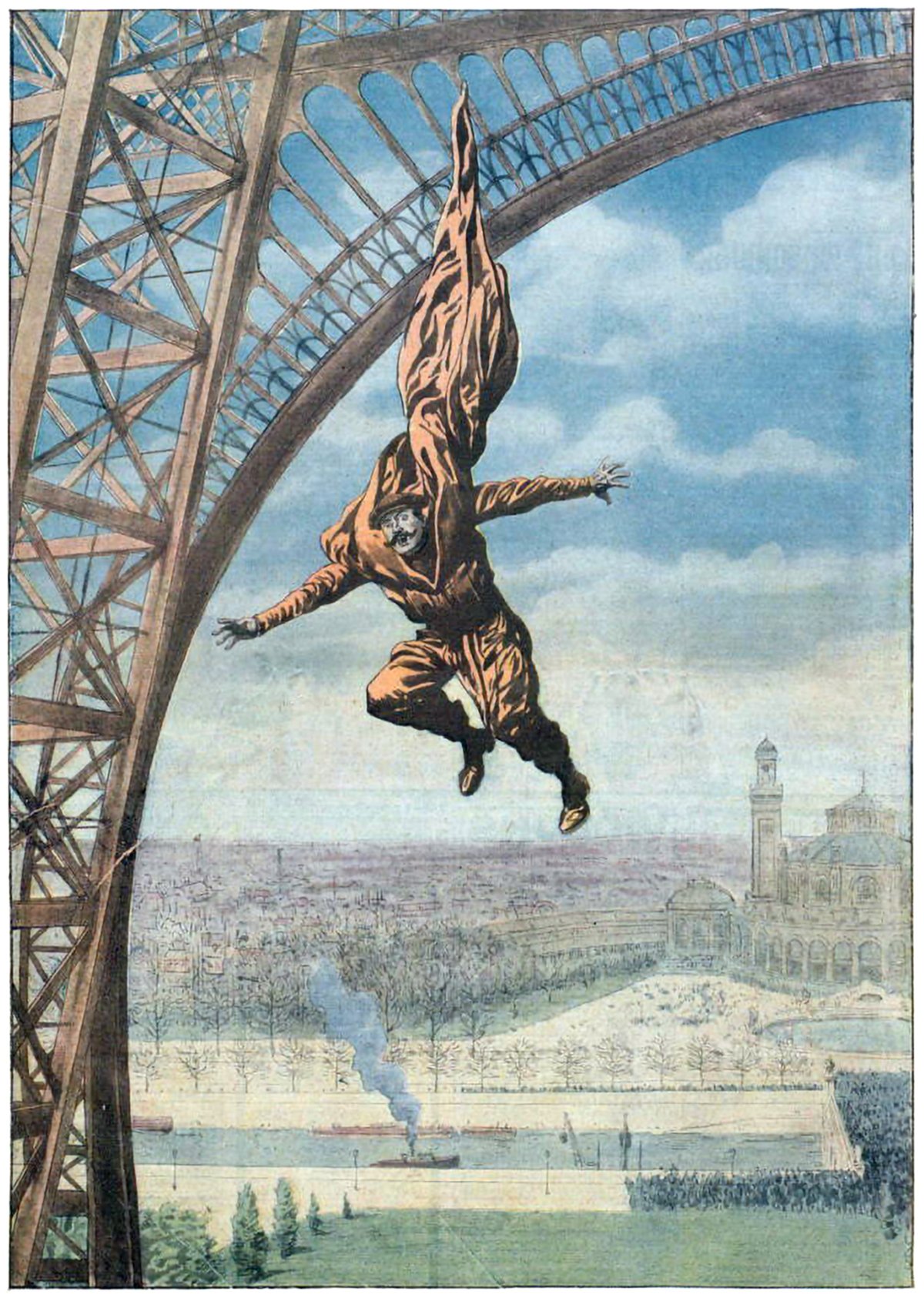Franz Reichelt’s Fatal Leap from the Eiffel Tower
Illustration from Le Petit Journal showing Franz Reichelt’s fatal leap from the Eiffel Tower in Paris in 1912.
Pictured above is an illustration showing Franz Reichelt, a French tailor and inventor who was an early pioneer of parachuting. In 1910-1912 he developed a wearable suit for pilots that would expand into a parachute should they need to eject themselves from their aircraft. He was inspired by the work of André-Jacques Garnerin, who developed and successfully tested the first frame-less parachute design. Reichelt believed he could develop a wearable version of the frame-less parachute, which would greatly increase it’s potential.
His first designs consisted of foldable wings made of silk, and he used dummies for testing. He tossed the dummies from the fifth floor of his apartment building in Paris. These initial tests were promising, but he ran into difficulty when he tried to create a wearable suit out of the design. His focus was on reducing weight while increasing surface area for the canopy. He applied to organizations in the hope of securing financing, but was unsuccessful. Still, he continued with his studies and made numerous test-jumps from low launch points, around 10 meters, or 32 feet, in height.
Reichelt believed higher launch points were needed to properly test his designs. This would allow the dummies to gain sufficient speed for his parachute to properly deploy and slow the fall. He set his sights on the first deck of the Eiffel Tower, which was 57 meters, or 187 feet, above the ground. This was roughly five times higher than his previous launch points. He secured permission for a test jump in early 1912, and he subsequently announced to the press that the jump would take place on 4 February 1912.
The authorities believed Reichelt was going to use a dummy for the demonstration. Upon arriving at the tower wearing his suit, he announced that he would be jumping himself. According to the Chief of Police at the time, if they knew it was going to be a live jump they would not have granted him permission. After the surprise announcement, numerous friends of his tried to dissuade him from jumping himself. For some reason, however, he would not be convinced otherwise. After some initial confusion and pushback from the police, he was allowed to climb to the tower platform. Once at the ledge, with the suit partially deployed already, he hesitated for roughly 40 seconds before leaping into the air.
The parachute never fully opened, and Reichelt fell to his death in front of a crowd of onlookers. There is video of the fatal jump, which shows a mass of formless fabric trailing behind his body as he falls to the ground. It’s a tragic and needless end to the story, without a clear reason behind Reichelt’s decision to jump himself. Some sources say he felt pressure to make a statement in order to attract sponsors, but this seems unlikely. Had the suit design worked, sponsors would be just as likely to back the project if it was tested with a dummy.
In the end, Franz Reichelt joined a myriad of other individuals who lost their lives in the pursuit of safe human flight. On the one hand, his confidence in his invention is admirable, but on the other hand, his decision was reckless and he paid for it with his life.
Check out the early history of the parachute here.

